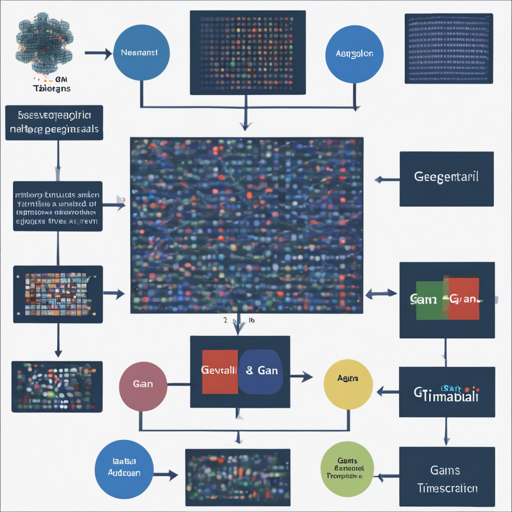Generative Adversarial Networks (GANs) and their variations, like TimeGANs and diffusion models, have revolutionized the way we create synthetic data. While they’re popular for generating images, they also excel in producing tabular data. This blog post will guide you through using the tabgan library for generating new datasets, troubleshooting common issues, and making sure you’re on the right track.
How to Use the TabGAN Library
To get started with tabgan, you’ll need to first install the library. Follow the steps below to set it up and generate synthetic data efficiently:
- Installation: Open your terminal or command prompt and run the following command:
pip install tabganfrom tabgan.sampler import OriginalGenerator, GANGenerator, ForestDiffusionGenerator, LLMGenerator
import pandas as pd
import numpy as nptrain = pd.DataFrame(np.random.randint(-10, 150, size=(150, 4)), columns=list("ABCD"))
target = pd.DataFrame(np.random.randint(0, 2, size=(150, 1)), columns=list("Y"))
test = pd.DataFrame(np.random.randint(0, 100, size=(100, 4)), columns=list("ABCD"))new_train1, new_target1 = OriginalGenerator().generate_data_pipe(train, target, test)
new_train2, new_target2 = GANGenerator(gen_params={'batch_size': 500, 'epochs': 10, 'patience': 5}).generate_data_pipe(train, target, test)new_train4, new_target4 = GANGenerator(gen_x_times=1.1, cat_cols=None, bot_filter_quantile=0.001,
top_filter_quantile=0.999, is_post_process=True, adversarial_model_params={'metrics': 'AUC', 'max_depth': 2, 'max_bin': 100,
'learning_rate': 0.02, 'random_state': 42, 'n_estimators': 100}, gen_params={'batch_size': 500, 'epochs': 500}).generate_data_pipe(train, target, test)Understanding the Generators – An Analogy
Imagine you’re hosting a grand dinner party where the food represents data. You’ll need different chefs (generators) to prepare various types of cuisines (data types). In our scenario:
- GANGenerator: This chef specializes in replicating recipes (data distributions) that are already popular. Using a feedback loop, he perfects his dishes based on guests’ tastes (adversarial feedback).
- ForestDiffusionGenerator: Think of this chef as one adept in extracting flavors and techniques from different regional cuisines (tabular diffusion). They blend these elements to create new, delightful dishes (data).
- LLMGenerator: This chef uses extensive cookbook knowledge (language models) to craft dishes. They draw from thousands of recipes, ensuring flavors blend well without redundancy.
Troubleshooting
If you encounter issues while generating data, here are some common troubleshooting steps:
- Data Quality: Verify the quality of your training data. Poor input can lead to subpar generated data.
- Parameter Tuning: Experiment with different values for
gen_paramsand sampling parameters to enhance data outcomes. - Performance Issues: Ensure that your runtime environment has enough resources, as GANs can be resource-intensive.
- For more insights, updates, or to collaborate on AI development projects, stay connected with fxis.ai.
At fxis.ai, we believe that such advancements are crucial for the future of AI, as they enable more comprehensive and effective solutions. Our team is continually exploring new methodologies to push the envelope in artificial intelligence, ensuring that our clients benefit from the latest technological innovations.
The Potential of TimeGAN for Timeseries Data
Need to generate multidimensional time series data? You can adjust parameters to extract meaningful temporal information. Utilize the TimeGAN for datasets that involve timestamps and trends over time. Here’s a skeleton example:
train = pd.DataFrame(np.random.randint(-10, 150, size=(100, 4)), columns=list("ABCD"))
train['Date'] = pd.date_range(start='1/1/2019', periods=100)
new_train, new_target = GANGenerator().generate_data_pipe(train.drop('Date', axis=1), None, train.drop('Date', axis=1))Conclusion
Using GANs and their variants for tabular data generation opens up numerous possibilities for enhancing dataset quality while utilizing synthetic data effectively. Dive into the tabgan library and explore the exciting world of synthetic data generation!

